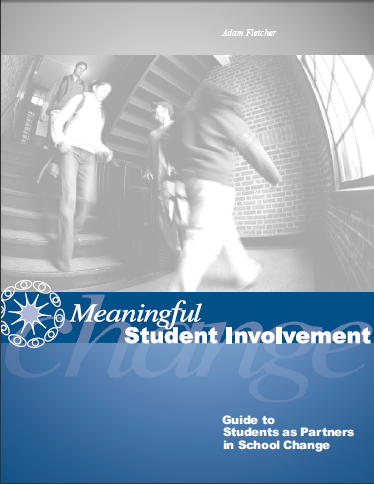
Students, staff, and families all play a critical role in building and maintaining a safe and supportive learning environment.
A strong connection between staff, students, families, and the school setting creates a positive climate as demonstrated by participation in school activities and governance, as well as the inclusion of the community at large into school activities. About 1 in 6 students – 16 percent of the student population – missed 15 or more days of school in 2015-16. Behavioral engagement in school activities is essential to school participation.
Youth voice is powerful in collaborating with school staff, administrators, school boards, and others in creating policies, procedures, rules, and norms that govern the school setting. School staff must work to uplift diverse youth voices to identify and address a broader range of needs and sustain involvement of young people in decision-making. Engaging youth in these decisions will offer them access to new knowledge, skills, and relationships that will not only empower them, but offer them the opportunity to ready themselves for post-secondary work.
Families have a strong influence on student outcomes and successes. Likewise, school staff –which can include all those that have contact with the student on a daily basis—can also have a direct influence by modeling appropriate social and emotional behavior. To engage parents, literature suggests that schools offer culturally appropriate and sensitive parenting involvement programs that focus on creating a stimulating home environment that motivates children to succeed. For parents to increase their child's connection to school, it is important to support learning at home and to engage with your child's teachers and school activities as their schedule allows.
Cross-system collaboration is a strategy employed by many school districts and can function as a catalyst for change among all child and youth-serving systems. When schools and communities work together, they find that they are able to avoid duplication of services and improve outcomes for youth and families. Agencies and organizations that effectively collaborate have an increase in communication, cooperation, and coordination which could break down divisions between multiple systems and create a culture of belonging to "one system," therefore promoting a community in which all share the responsibility of creating a positive school climate.
Centers for Disease Control and Prevention. (2018). School Connectedness. Accessed at: https://www.cdc.gov/healthyyouth/protective/school_connectedness.htm
Gonsoulin, S. S., Read, N. W., & National Evaluation and Technical Assistance Center for the Education of Children and Youth Who Are Neglected, D. (2011). Improving Educational Outcomes for Youth in the Juvenile Justice and Child Welfare Systems through Interagency Communication and Collaboration. Practice Guide. National Evaluation And Technical Assistance Center For The Education Of Children And Youth Who Are Neglected, Delinquent, Or At-Risk.
Hall, C. (2020). The Impact of Family Engagement on Student Achievement. Networks: An Online Journal for Teacher Research, 22(2).
Jeynes, W. (2012). A meta-analysis of the efficacy of different types of parental involvement programs for urban students. Urban Education, 47(4), 706–742.
Learning Policy Institute & Turnaround for Children. (2021). Design principles for schools: Putting the science of learning and development into action. Retrieved from: https://eb0b6ac7-8d5b-43ca-82bf-5fa89e49b5cb.usrfiles.com/ugd/eb0b6a_042c6c82a88144249223ca80bc9c2919.pdf
Little, P. & Pittman, K. (2018). Building partnerships in support of where, when, and how learning happens. Washington, DC: Aspen Institute National Commission on Social, Emotional, and Academic Development.
Shakesprere, J, O’Brien, M & Harrison, E. (2020). Youth Engagement in Collective Impact Initiatives. Urban Institute. Accessed at: https://www.urban.org/sites/default/files/publication/103408/youth-engagement-in-collective-impact-initiatives_1.pdf
Usher, A., Kober, N., & Center on Education, P. (2012). 4. What Roles Do Parent Involvement, Family Background, and Culture Play in Student Motivation?. Center On Education Policy.
Valli, L., Stefanski, A., & Jacobson, R. (2016). Typologizing school–community partnerships. Urban Education, 51(7), 719-747. doi:10.1177/0042085914549366
Yonezawa, S., Jones, M., Joselowksy, F., & Academy for Educational, D. (2009). Youth Engagement in High Schools: Developing a Multidimensional, Critical Approach to Improving Engagement for All Students. Academy For Educational Development.



